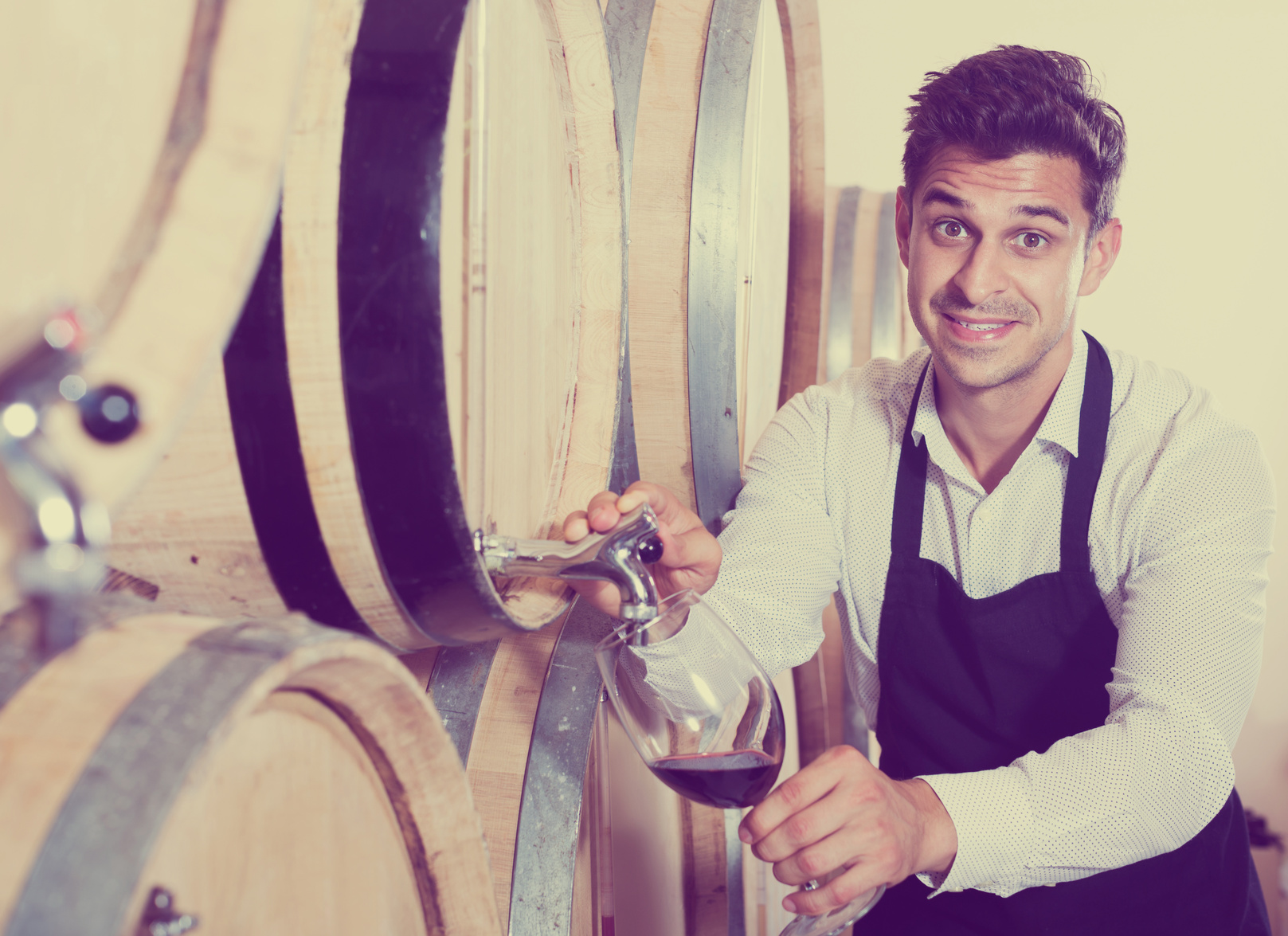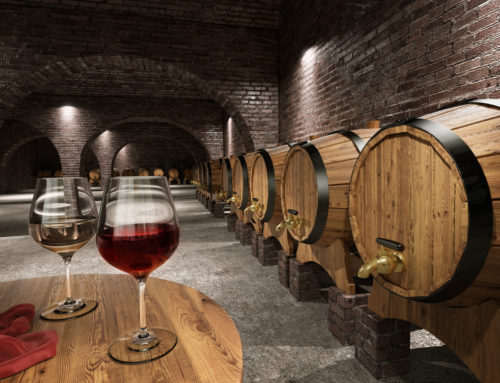In the United States alone, more than 900 million gallons of wine are consumed each year. And that number has been steadily rising since records were first kept beginning in 1934. But wine’s popularity is still far from that of America’s favorite alcoholic beverage, beer. A recent Gallop poll found that 43 percent of Americans say that beer is their drink of choice. Wine or wine on tap wasn’t far behind, with 32 percent naming it as their preferred drink.
Beer remains slightly more popular. But the popularity may be more the result of convenience more so than anything else. Beer is often less expensive than wine, and far more readily available. You can get it in cans, bottles, and on tap, at bars and restaurants on every street corner in the U.S. While wine is available in all of these places, it is primarily available from a bottle. But that is about to change.
Wine on tap has been a popular commodity in many European countries for years. But while these systems have been used in small numbers here in the U.S. in the past, they never caught on. Now, they are quickly becoming the next big thing for trendy bars and restaurants.
The benefits of wine from a tap instead of from a bottle, or worse, from a box, are extensive. Wine from a tap reduce individuals and business’ impact on the environment. They save loads of money compared to buying bottles. Furthermore, they provide consistently fresh, chilled wine, glass after glass. This helps reduce the number of bottles that are thrown out before they’ve been emptied.
If you’re ready to learn more about how a wine tap system can change the way you enjoy your favorite beverage, keep reading!
The environmental impact of wine on tap
Every year, each individual throws away an average of 425 beverage containers. If you’re a wine drinker, many of those containers may be large glass bottles. As glass is one of the longest-lasting man-made products, it could take as many as a million years for each glass bottle to break down. Wine bottles and other beverage containers fill landfills, creating an environmental hazard.
But wine on tap helps to eliminate some of that waste. Wine can be poured straight from the tap into a reusable glass. The kegs that the wine arrives in are reusable. They could be recycled and refilled for as long as 20 years. They also aren’t packaged and sold the same way that bottles are. This eliminates the need for corks, labels, shipping boxes, and more.
Wine bottles can be recycled. The glass can be processed and used to create other glass products, such as wine bottles made from recycled glass. But only 27 percent of all wine bottles are recycled. A single keg can hold the same amount of wine as 26 bottles. Which means that each time that keg is filled, it is preventing 26 glass bottles from ending up in landfills.
With over 600 million bottles of wine sold in restaurants each year, the amount of waste produced is astounding. But if just 10 percent of those wine bottles were swapped out for wine poured from a tap system, the number of bottles used would be 60 million less. That’s 60 million fewer bottles added to landfills each and every year!
Why a glass of wine from a tap tastes better
Around 60 percent of all wine sold in restaurants and bars is sold by the glass. This presents a problem, because once a bottle is opened, poured, and re-corked, it loses much of its freshness thanks to the introduction of oxygen into the bottle. This presents a problem, because once a bottle is opened, poured, and re-corked, it loses much of its freshness thanks to the introduction of oxygen to the bottle.
The result is a drop in quality and taste. If the rest of the bottle does not sell soon enough, it may have to be thrown away. This can be a huge loss of profit for restaurants. Many restaurants choose not to offer more expensive varieties of wine by the glass because of the potential loss of profit if the entire bottle does not sell. But with wine on tap, every glass is as fresh as the last. Gas in the keg keeps oxygen out so that the rest of the keg stays fresh even after glasses have begun to be poured. It’s so effective that a keg of wine can stay fresh for up to three months after its first tapped.
Wine bottles also take up a lot of space. For smaller restaurants, this can present a problem when it comes to finding room to chill all of the different wines that they serve. During busy hours or days, it can be tough to keep up with demand, which may result in lukewarm bottles or glasses being served. Wine on tap eliminates this problem as well. Plus, the keg of wine never experiences variations in temperature. Wine bottles that are shuffled to and from a cooler, and sometimes left out, may suffer in taste.
Why wine on tap makes sense for restaurants
While there are plenty of benefits for consumers drinking wine on tap, restaurants benefit as well. Fewer bottles mean less storage space needed and less waste to worry about. The process of having wine bottles delivered, unpacked, and organized is time-consuming, and expensive if an owner has to pay an employee to do so. But with each keg supplying 26 bottles worth of wine, there is much less manual labor involved.
Restaurants can offer more expensive wines by the glass, without worrying about wasted product. Delivering wine from a tap is also much faster than having to select, uncork, pour, and re-cork bottles each time a glass of wine is ordered. Wine in kegs is also less expensive than wine by the bottle, because of the savings in packaging that the manufacturer gets. Restaurant owners could pass this savings along to customers, who may then choose to order additional glasses or visit the restaurant more often to get a cheaper glass of wine than they can get elsewhere.
How can you add wine on tap to your home or business?
If you want to start serving wine on tap in your home or business, you’ll need to start by finding a tap.There are many options available on the market. Since tap wines have been popular elsewhere in the world, many require overseas shipping, which can be costly and take a long time to receive. Luckily, with wine on tap growing in popularity in the U.S., domestic options are becoming more readily available.
Finding the right tap system
To add wine on tap to your home or business, you’ll need the right kind of tap. If you simply use a normal pump tap, your keg will go bad within a day or two of tapping it. With the QuikTap Wine Tap system, pressurized Argon helps to keep your keg fresh all the way to the expiration date that is set by the keg manufacturer.
Kegs made overseas operate on a different system than domestic kegs. As a result, you’ll need a tap system that is equipped to handle them if you plan to serve or buy imported wines. Many wine taps are small, making them easy to add to existing bar areas. You could also add a single wine tap system, for your home or for smaller restaurants. Or add several, that way you can offer guests or customers a variety of options. You could rotate your selection with the changing seasons, or have a single seasonal option much like some restaurants and bars do for their beer selection.
A tap wine system also allows you to offer customers a more expensive, high-end wine option. You don’t have to worry about the wine in a bottle going bad before it’s used, which makes it possible to sell the wine by the glass without worrying about a loss of profit.
Adding a tap to your home or business
Choosing to add a tap to a home or business can be a great way to save money, reduce your environmental impact, and to enjoy great tasting wine.
For those who drink a lot of wine at home, a tap system allows you to buy wine by the keg and serve it fresh for your family and guests. With wine on tap becoming such a hot item at bars and restaurants in the U.S., it also makes for a great conversation piece. Tap systems for serving wine make even more sense for restaurant and bar owners. A tap system may involve upfront costs to set up, but the savings that you’ll get from buying kegs instead of bottles will quickly make up the cost.
If you’re ready to see how a wine on tap system can save you money, reduce your impact, and provide great tasting wine for yourself or for your company, contact QuikTap today! Still not convinced? Check out what some happy QuikTap customers had to say about the impact that a tap had for them!


